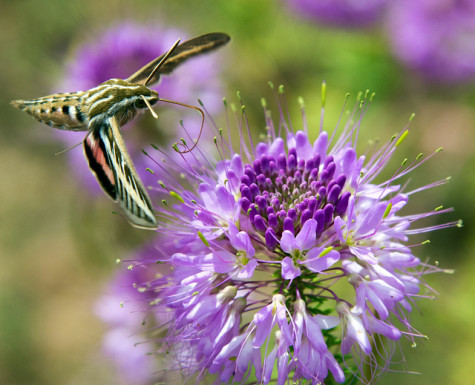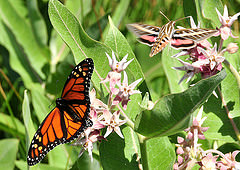 One night this spring I left all the doors open to the van. It was stinkier than usual, and I figured anyone who thought they might peer inside would have found little of value before being frightened off by the smell.
One night this spring I left all the doors open to the van. It was stinkier than usual, and I figured anyone who thought they might peer inside would have found little of value before being frightened off by the smell.
But the next morning when I turned the ignition on, the kids gasped. Our car was full of wings.
I’ve never paid much attention to moths. I’ve always thought of them as poor, persistent creatures that can’t resist a lightbulb. Maybe I haven’t paid attention because they remind me too much of myself, fluttering around the same old bright things when there’s a whole world right behind me if I would only look.
But when I do look closely at a moth—one of them had died and fallen onto the far back windowsill—it’s beautiful, every bit as deserving of my attention as their brightly-colored daytime counterparts, the butterflies.
I had to look up what really was the difference between moths and butterflies—turns out, not much. They generally have different antennae and eyes, and moths tend to be duskier, to be more active at night. But there are some delightfully colored moths, too, and some that cruise around in the daytime, feeding on flowers.
As far as I can tell, the stowaways in the van were white-lined sphinx moths, which may have made their way among the half-full water bottles and old lunches and questionably clean diapers and car seats around dusk or dawn, when they tend to be most active. Some people call them hummingbird moths, because they can be nearly as large, and look similar in flight.
The ones that fluttered through the van were smaller, but still had the elegant zebra markings, the surprising flash of pale pink as they spread their wings. They seemed to appear, fully grown, from nowhere. People paying attention may see this moth caterpillar eating its way through the garden. I, clearly, have not been paying attention, but consoled myself after learning that the caterpillars may burrow underground during winter to become pupa.
These sphinxes get their name from the caterpillar stage—I’ve read that they rest with their heads raised, their forelegs folded, looking like their Egyptian counterpart. But the moth’s enigma rings true for me, too. I wonder what riddle they might have been posing by taking shelter within our car; I wonder if there was a light that drew them there, if it’s one I’ll ever see.
Images:
Top image by John Fowler via Flickr/Creative Commons license
Monarch and moth by Tom Koemer/USFWS via Flickr
For years it was unknown what pollinated the ghost orchid, Dendrophylax lindenii. It was suspected that the giant sphinx moth was the pollinator but it was never for certain. It still isn’t *quite* certain that’s the species, but in 2008 my husband and I filmed one (or a relative) visiting a ghost orchid in a remote swamp in south Florida. They are very cool moths and it’s quite crazy to have one buzz your ear when you are sitting in total darkness in mosquito (and snake) infested waters! https://www.youtube.com/watch?v=ca–GgEe2Zg